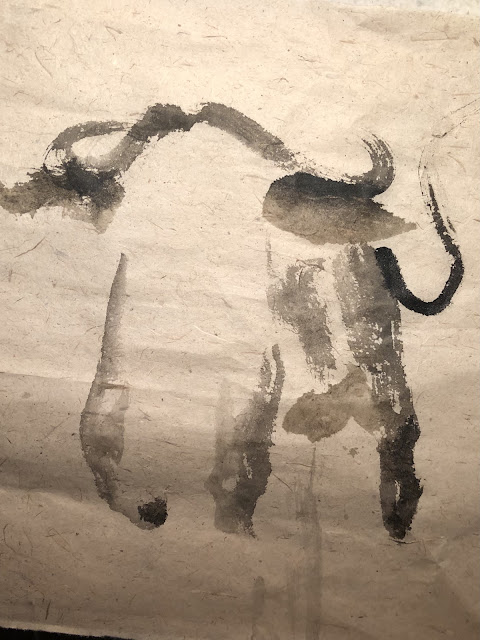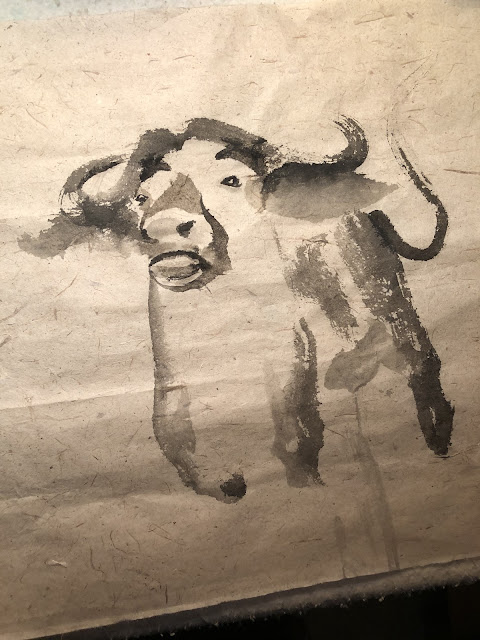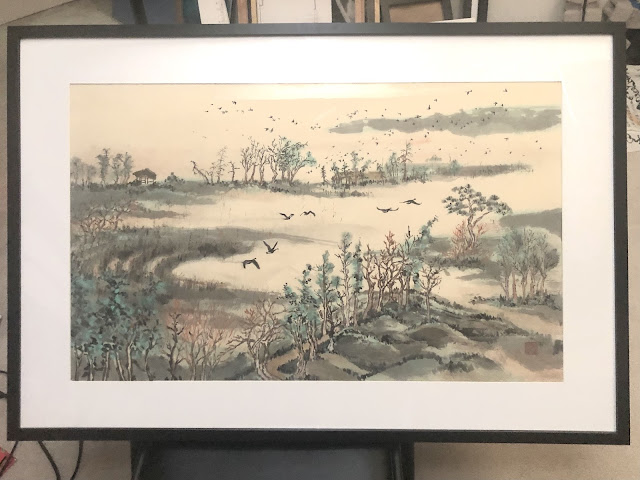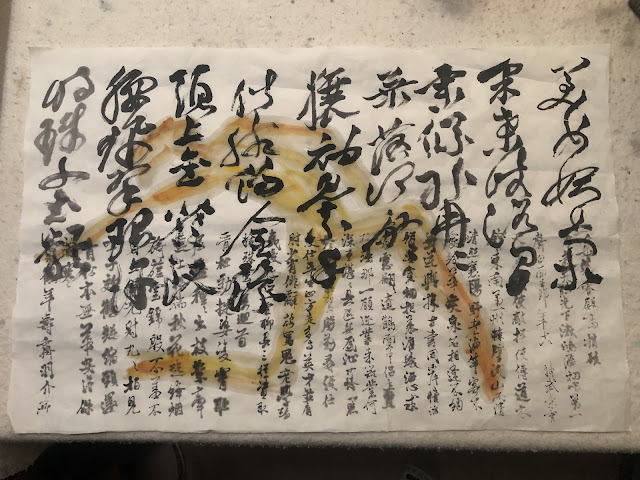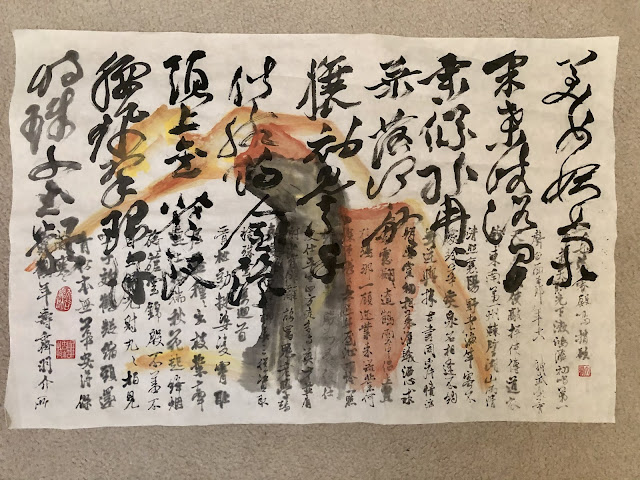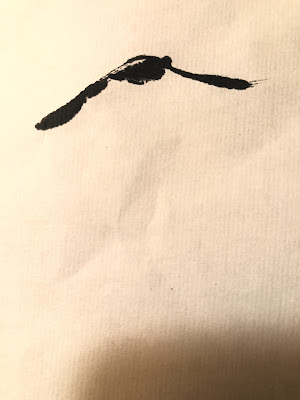I wanted to paint an ox for the Chinese New Year to replace the Rat of 2020. A lot of the Ox paintings portray the ox as lounging around in the meadows, or being strung along by their nose rings. That was not the image of the ox I wanted to paint. Another favorite setting for an ox painting would be some little kid riding the ox playing a bamboo flute.
Poetic but banal.
Come to think of it, I don't even know what an ox looks like; I might have it confused with a water buffalo? Does it matter if the zodiac animal is a buffalo or a dairy cow? Personally I want my animal to have horns and be fierce, sort of like a bull, and certainly not passive. I've had enough stagnation this past year. So perhaps I'll paint what I deem is a bull ox, or ox bull ? Something that could breakthrough the thick miasma from last year. Not in the cliché sense of auspiciousness but actually taking charge. Is there such an animal?
Perhaps too much bovine scat here, wink wink.
Thus I started out with a sketch,
I wasn't sure what this animal was, but it sorta fit the bill, so I proceeded to paint in on Xuan paper. I was using the rough, fibrous kind. The thick fibers gave a special nuance to the finished product, and functioned as incidentals to hide any imperfections of the painting. Like trinkets on an empty wall, you get the picture.
I began with the horns and legs, basically trying to establish a general body proportion. The ears were written as flower petals or leaves, using side tip brushstroke. The horns and the tail were strictly center tip brushstrokes.
Then I moved onto the mouth and eyes
It was interesting to note that the brushstrokes pertaining to the mouth and eyes lacked the spontaneity exhibited by the horns, tail and legs. The fact that I was trying to locate the eyes and nostrils in a proper location somehow zapped the energy out of the brush. A gingerly apprehension was evident.
I painted a triangle to represent the ridge of the nose and defined what the plane which housed the nostrils and the mouth. I meant to darken the area above the eyes to show orbital ridges of the skull but ended up with two very conspicuous eyebrows.
Final touches to fill in the rest of the body,
Immediately the painting looked weird to me. It finally dawned on me that mouth and nostrils were not only too rigid, as I had mentioned earlier, but I was too conspicuous in my efforts to define that mouth/nose plane and I ended up with the snout of a pig?
After I was done amusing myself, I decided to re-do the painting. I tried a different profile, with the animal facing the right hand side this time.
I decided to darken the problem area of the mouth/nostril to make that area seem less flat.
Still something didn't look right. I thought I could make it better by giving the painting a little sepia coloring, but it didn't help. In my training I've been indoctrinated that ink itself is a color and that's why the ability to manipulate and display different ink tones is held in such high regard in Chinese brush panting, so I couldn't explain why I would even consider a recue by color. I suppose when one is desperate, one tries anything under the sun.
I eventually came to the conclusion that my animal had too high a dome and resembled a lamb; too big were the ears and it reminded me of Dumbo!
That meant I needed to try my luck with the ox painting again, someday.
For now, I've had my laughs.
It was definitely entertaining.


